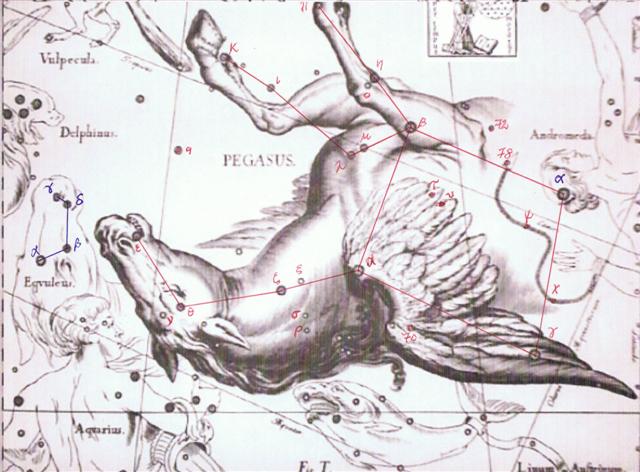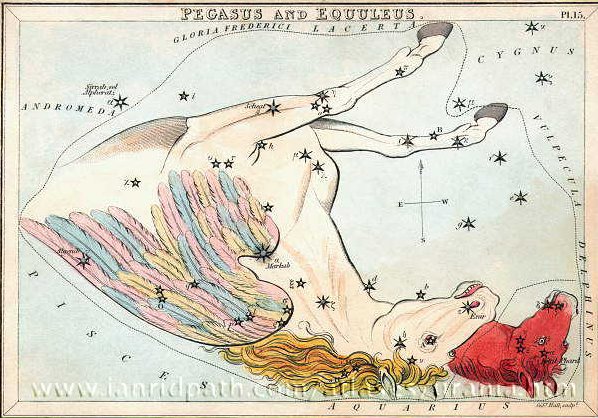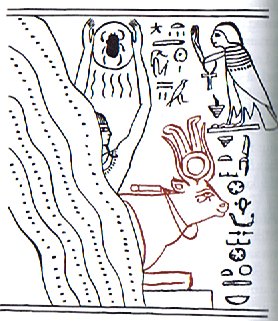One corner of the Square in Pegasus belongs at the back of the head of Andromeda (viz. α, Sirrah), and according to Hevelius her right hand is chained to the Square: 
The head of the Foal (Equuleus) has been drawn
in conjunction with the head of Aquarius - Sun is
rejuventated into the red Foal after having taken off the
'garment' of Aquarius.

Pegasus, on the other hand, could perhaps be a personification of
white Moon. We can compare with the corresponding Egyptian
perception of the end of the rainy season:

There is a single border line drawn around the uplifted Sun insect
(manu rere). In the head ornament of Hathor there is a
double border line. Perhaps we should read the
vai glyphs accordingly:
78 (March 18 in a leap year) + 29 = 107 (April 17 in an ordinary year).
There are 392 glyphs on side a of the C tablet, 363 (Ca13-20) + 29 = 392. But Ca13-20 can be counted as only half a day. 392 - ½ = 391½. Above I have 390½ days and therefore there is one glyph which cannot correspond to a day. The leap day (February 29) has changed the number for March 17 from 76 to 77 (from 441 to 442) and 168 to 169 (the number of days between September 29 and March 17. The number of days from September 29 (day 272 in an ordinary year) to March 18 (day 77 in an ordinary year) is 365 + 77 - 272 = 170. Therefore, in order to use my suggested equation 13 * 30 = 390 in an ordinary year 170 should be counted from September 30 (273) to March 18 (77):
But my model necessitates counting 1 of the days from May 1 up to and including September 30 as a kind of 'leap day', not to be counted. This day surely ought to be July 12:
When Antares was culminating it could have been expressed as erua mago (double shark), which according to my rule of thumb for reading Metoro and the rongorongo texts would mean 'no shark'. We should also notice how 57 (= 3 * 19) is underlined in Ca5-7, in the day of Castor (day 57 in the manzil calendar), and day 557 for the culmination of Antares. 121 (the number of 'rain drops' at the back side of Hathor) + 152 (June 1) = 273 (September 30) = December 30 (364) - 91:
| ||||||||||||||||||||||||||||||||||||||||||||||||||||||||||||||||||||||||||||||||||||||||||||||||||||||||||||||||||||||||||||||||||||||||||||||||||||||||||||||||||||||||



